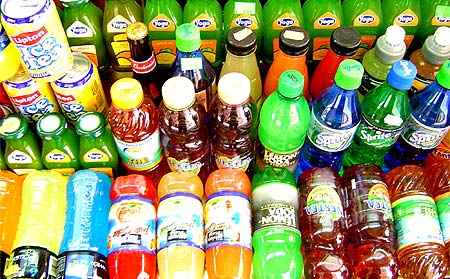
BY DAVID GOLDSTEIN
Knight Ridder Newspapers
WASHINGTON- When small amounts of benzene, a known cancer-causing chemical, were found in some soft drinks 16 years ago, the Food and Drug Administration never told the public.
That’s because the beverage industry told the government it would handle the problem and the FDA thought the problem was solved.
A decade and a half later, benzene has turned up again. The FDA has found levels in some soft drinks higher than what it found in 1990, and two to four times higher than what’s considered safe for drinking water.
Both the FDA and the beverage industry said the amounts were small and that the problem didn’t appear to be widespread.
“People shouldn’t overreact,” said Kevin Keane, a spokesman for the American Beverage Association. “It’s a very small number of products and not major brands.”
“The issue here is not something that should cause anyone alarm or terrific concern,” said George Pauli, a top food safety expert at the FDA, “but if there’s something that can be reduced, we want to reduce it.”
Neither Keane nor Pauli would identify the drinks being tested because the investigation is still under way.
Pauli said that people ingest more benzene by breathing than they would if they drank a can of soda containing the chemical. Small amounts of the chemical also are naturally present in some foods such as fruits, vegetables and dairy products.
Still, Pauli added, “You want to avoid it in any degree you can.”
Of the 60 or so varieties of sodas, sports drinks, juice drinks and bottled waters that the FDA has tested so far, benzene levels have ranged from two and three parts per billion to more than 10-20 parts per billion.
The Environmental Protection Agency’s safety standard for benzene in drinking water is five parts per billion. If it exceeds that, authorities are required to notify the public.
Keane said it was “tough to compare” the safety standard for water with soft drinks because the water rule is based on the fact that people drink more water each day.
Benzene is an industrial chemical that’s found in tobacco smoke, car exhaust and vapors from household products such as paint, detergents and furniture wax. Long-term exposure can cause leukemia and other cancers of the blood, according to the Centers for Disease Control and Prevention.
Benzene can show up in soft drinks when two common ingredients react: ascorbic acid, otherwise known as vitamin C, and either sodium benzoate or potassium benzoate. Both are preservatives used to prevent the growth of bacteria.
But the presence of these chemicals doesn’t necessarily produce benzene.
“It’s not as simple as looking at the label, and if you see those two, there will be problems,” Keane said.
Pauli said that a catalyst such as temperature or light is needed to trigger the formation of benzene. That’s what scientists suspect occurred in 1990 when authorities found benzene in products made by Cadbury Schweppes and Koala Springs, an Australian beverage company.
But a health safety watchdog organization said the FDA should inform the public, particularly since so many soft drinks are marketed to children.
“Most people would prefer there are no known human carcinogens in what they drink,” said Jane Houlihan, vice president for research at the Environmental Working Group, a nonprofit, nonpartisan scientific research group that studies toxic chemicals. “This is a case where industry agreed to get it out of the products, and all the evidence says they didn’t.”
Soft drink manufacturers PepsiCo and Coca-Cola declined to comment and referred calls to the American Beverage Association.
When benzene first turned up 16 years ago, FDA officials met with representatives of the beverage industry who “expressed their concern about the presence of benzene traces in their products and the potential for adverse publicity associated with this problem,” according to an internal FDA memo from December 1990.
Keane said the industry told the FDA that it was reformulating its products to alleviate the problem. Adding sugar, for instance, or replacing the vitamin C, can inhibit the chemical reaction that produces benzene, Pauli said.
An FDA official who asked not to be identified said that the agency didn’t inform the public about the benzene problem 16 years ago because it didn’t consider it a public health concern since the levels were low and the companies were reformulating.
He said the FDA conducted follow-up testing in the early 1990s, but not since because “we thought the problem was gone and over. Then it resurfaced.”
The current investigation began when an activist concerned about soft drink machines in schools tried to get the FDA interested in the issue. He then sent lab results showing some soft drinks with higher-than-normal benzene levels.
“Our first reaction was, `Yes, we looked at this in 1990 and essentially there was nothing there,'” Pauli said. “Then he came up with some numbers and we said, `That’s not what we came up with back then. We have to go back and look.'”
Asked why the problem would resurface 16 years later, Keane said the industry took the necessary steps at the time, but it’s possible some manufacturers just didn’t know.
“It’s a very fast-growing industry, both in terms of companies and new brands, so a lot has changed in the last 16 years,” he said.
Food safety authorities in Great Britain and Australia also are testing soft drinks for benzene.


This is a very good weblog. I’ve been back once or twice during the last few days and want to register for your rss by using Google but can’t understand the right way to do it exactly. Do you know of any tutorials?